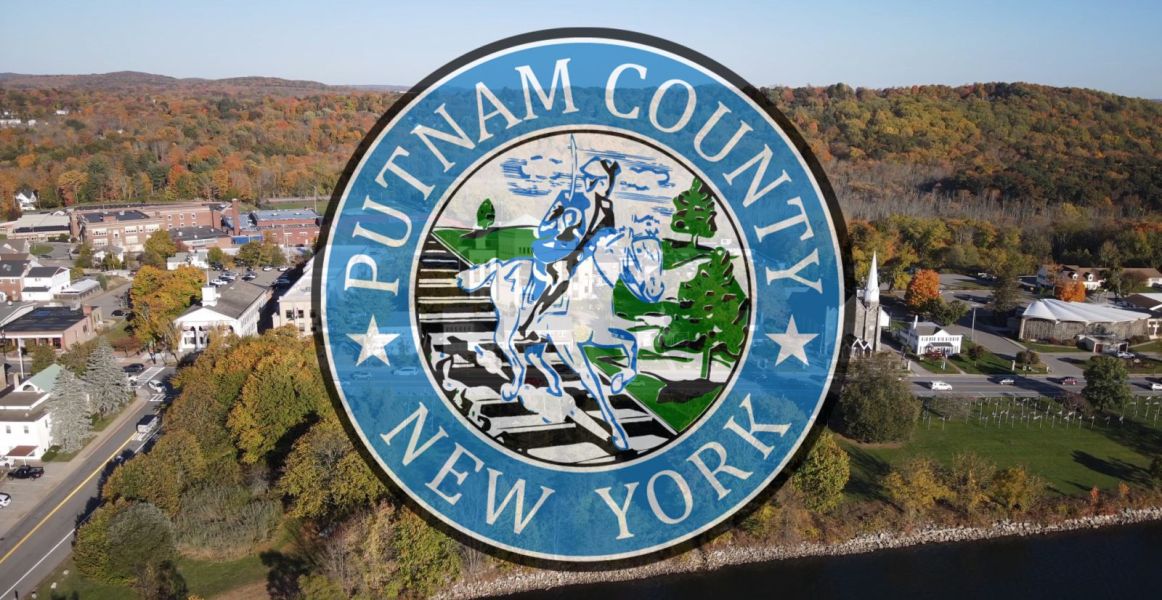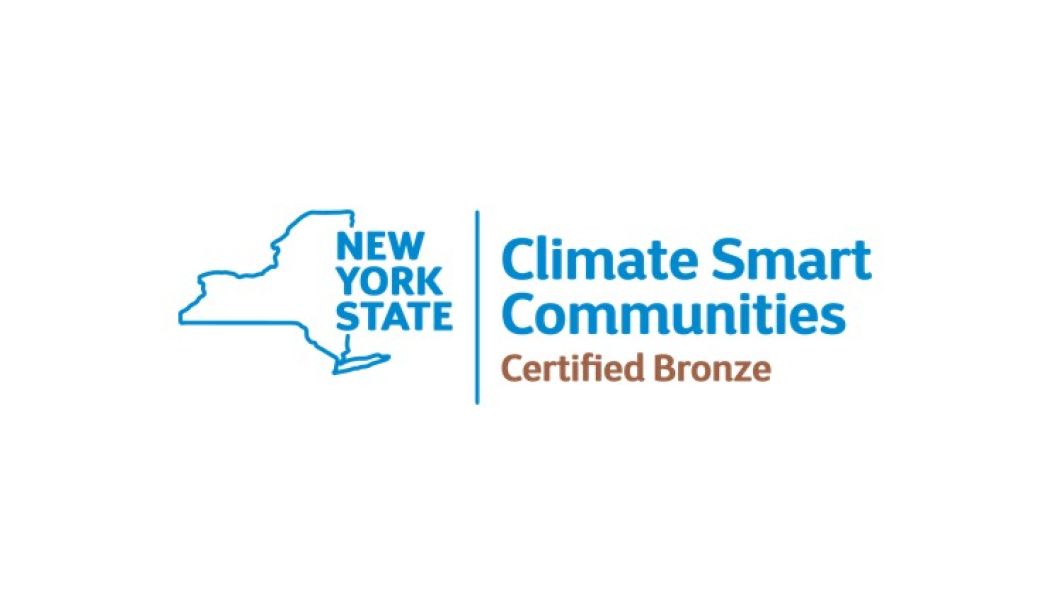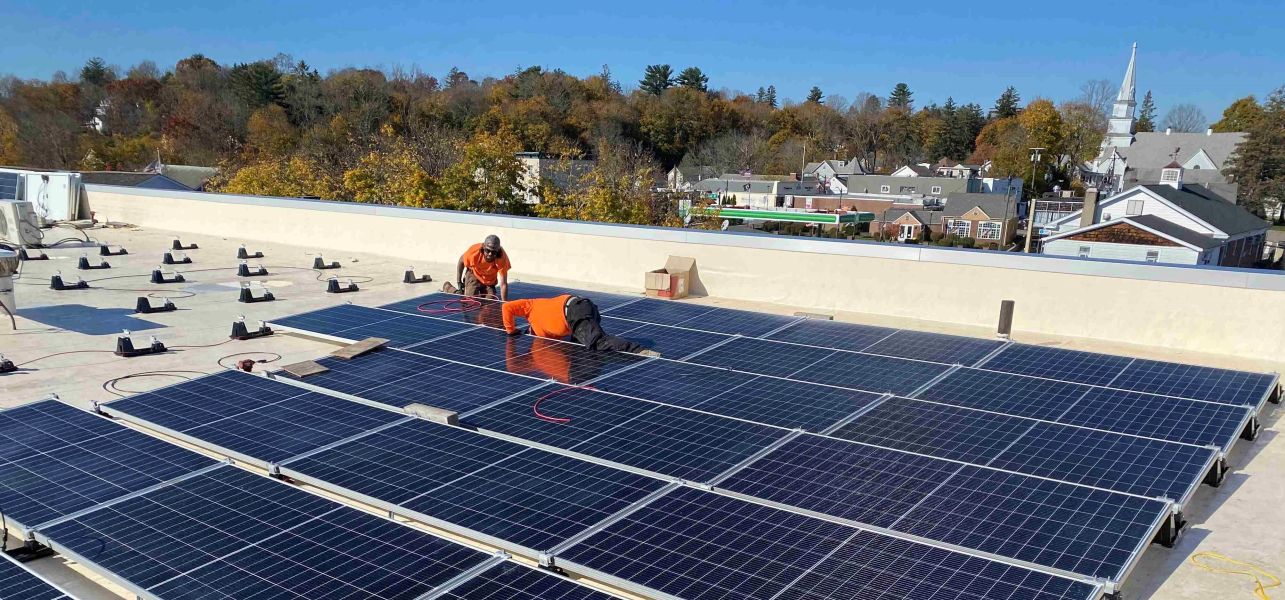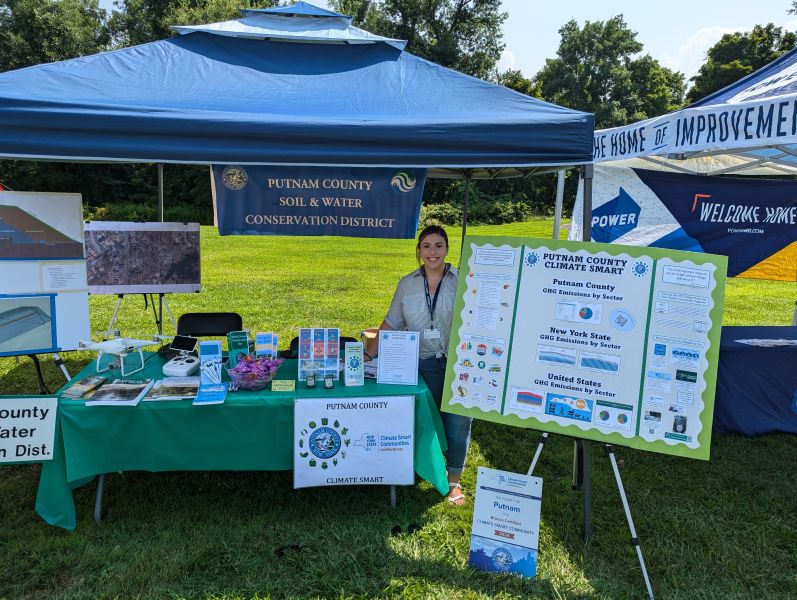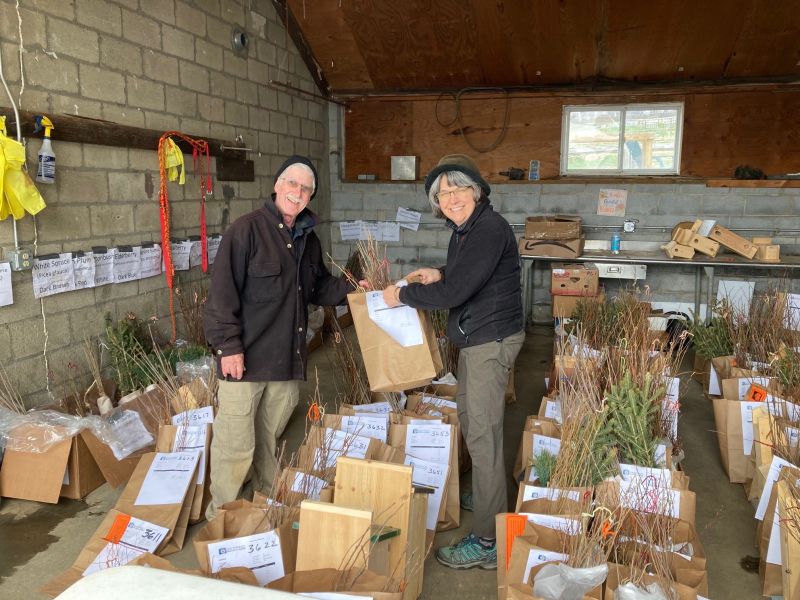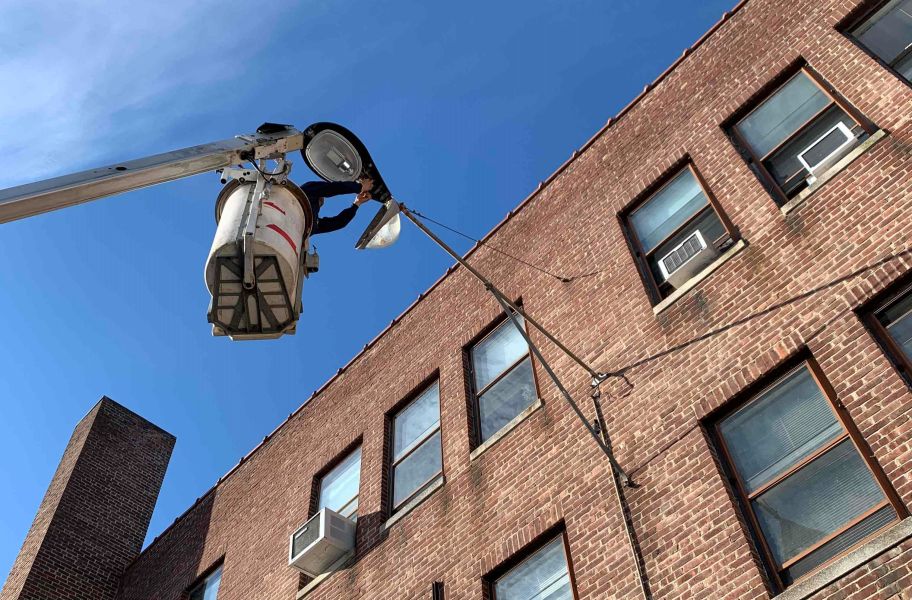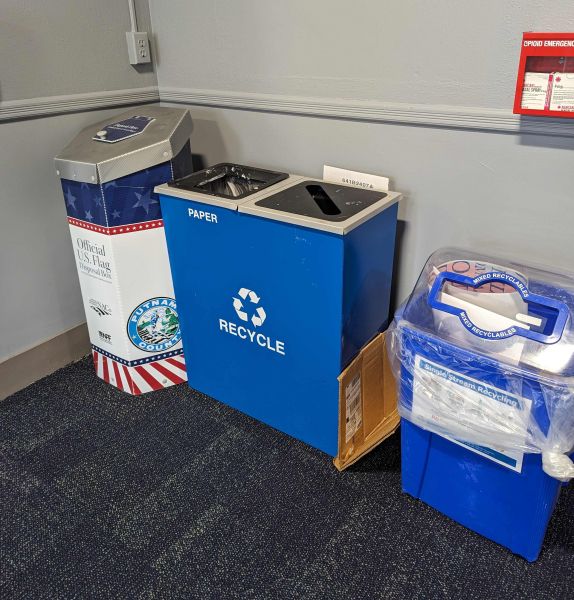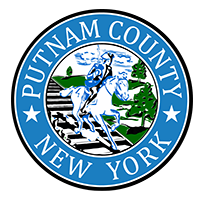
Climate Smart
About
The Climate Smart Communities (CSC) Program began in 2009 as an interagency initiative of New York State. The CSC program is jointly sponsored by the following six NYS agencies: Department of Environmental Conservation (DEC); Energy Research and Development Authority (NYSERDA); Department of Public Service; Department of Transportation (DOT); Department of Health (DOH); and the Power Authority (NYPA). DEC acts as the main administrator of the program. The program helps local governments take action to reduce greenhouse gas emissions and adapt to a changing climate. To learn more visit https://climatesmart.ny.gov/about/
The Putnam County Climate Smart website is featured as an affiliate webpage under the Department of Planning, Development, and Public Transportation, the department leading the County's Climate Smart efforts. This site is intended to only reflect the efforts/initiatives that Putnam County as its own municipality has taken to mitigate and adapt to the climate crisis. Additionally, this site will act as an educational resource to residents and other municipalities interested in achieving a lower carbon footprint and sustainable lifestyle. Other municipalities have the opportunity to register and/or certify as a CSC and create their own programs.
Putnam County officially became a Bronze Certified Climate Smart Community in June 2024. To read the final report click here.
The list of registered/certified communities within Putnam and their websites are as follows:
- Kent (Bronze Certified 2024): https://www.kentclimatesmart.org/
- Philipstown (Bronze Certified 2021): https://www.climatesmartphilipstown.org/
- Putnam Valley (Registered 2020): https://www.putnamvalley.gov/climate-smart-task-force/
- The Village of Cold Spring (Bronze Certified 2024): https://www.coldspringny.gov/advanced-search?keywords=climate
- The Village of Nelsonville (Registered 2021): https://www.nelsonvilleny.gov/
Climate Change
What is Climate Change?
Climate change refers to long-term shifts in temperatures and weather patterns. Such shifts can be natural, due to changes in the sun’s activity or large volcanic eruptions. But since the 1800s, human activities have been the main driver of climate change (aka anthropogenic climate change) primarily due to the burning of fossil fuels like coal, oil and gas. Burning fossil fuels generates greenhouse gas emissions that act like a blanket wrapped around the Earth, trapping the sun’s heat and raising temperatures. The main greenhouse gases that are causing climate change include carbon dioxide (CO2) and methane (CH4). Popular sources of CO2 emissions include combustion engines (gasoline and diesel), coal and natural gas burning for heat and energy, and deforestation (removal of carbon sinks). 87% of all human-produced carbon dioxide emissions come from the burning of fossil fuels like coal, natural gas and oil. Major sources of CH4 emissions include agriculture, oil and gas operations, wastewater treatment, and landfills. Energy, industry, transport, buildings, agriculture and land use are among the main sectors causing greenhouse gases. (Source: United Nations)
“Climate change” and “global warming” are often used interchangeably but have distinct meanings. Similarly, the terms "weather" and "climate" are sometimes confused, though they refer to events with broadly different spatial and time scales. Climate change refers to changes in weather patterns and growing seasons around the world. It also refers to sea level rise caused by the expansion of warmer seas and melting ice sheets and glaciers. Global warming causes climate change, which poses a serious threat to life on Earth in the forms of widespread flooding and extreme weather. (Source: NASA)
Climate change effects can be seen and felt accross the entire United States. To learn more about regional impacts of climate change, visit https://climatechange.chicago.gov/climate-impacts/climate-change-impacts-region.
- In the Northeast, heat waves, heavy downpours, and sea level rise continue to compromise infrastructure, agriculture, fisheries, and ecosystems. As such, many states and cities are beginning to incorporate climate change into their planning activities.
- In the Northwest, changes in the timing of peak flows in rivers and streams are reducing water supplies and worsening competing demands for water. Sea level rise, erosion, flooding, risks to infrastructure, and increasing ocean acidity pose major threats. Increasing wildfire incidence and severity, heat waves, insect outbreaks, and tree diseases are causing widespread forest die-off.
- In the Southeast, sea level rise poses the greatest threat to the region's economy and environment leading to decreased freshwater availability. Extreme heat waves will continue to effect public/environmental health, energy, agriculture, and more.
- In the Midwest, extreme heat, heavy downpours, and flooding continue to effect infrastructure, public health, agriculture, forestry, air and water quality, and more.
- In the Southwest, climate change has brought about increased heat, drought, and insect outbreaks making wildfires and vector transmitted diseases more severe. In coastal areas, flooding and erosion are additional concerns. (Source: NASA)
According to the NYSDEC "the annual statewide average temperature in New York has warmed 3°F (0.6°F per decade) since 1970. The state's average temperatures are projected to rise by as much as another 3°F by 2080 with the greatest warming occurring in the northern parts of the state. Rising annual temperatures are already having widespread impacts on New York's communities and ecosystems and impacts are expected to increase. New York State's changing climate may no longer be able to support the types of plants, insects, and wildlife living in New York, particularly those in high-elevation regions like the Catskills and Adirondacks. As New York's temperatures increase, these species will extend their range north, impacting the industries and economies that depend on them such as fishing, hunting, and tourism."
Across the northeastern U.S., winters are warming faster than any other season. Over the last century, average winter temperatures have increased by approximately 3°F, spring temperatures by 2°F, and summer and fall temperatures by 1.4°F. Warmer winter temperatures and fewer days below freezing bring winter precipitation in the form of rain casuing reduced snow cover and earlier spring snow melt. Reduced snow cover not only effects winter tourism in the State but also increases the vulnerability of certain plants that depend on snow for insulation, and wildlife that depend on snow for protection from predators during the winter.
Warmer winters in New York are also affecting the winter-spring season transition, impacting the timing of blooming for trees and flowers which migrating and hibernating wildlife depend on for food. Changes to the timing of the winter-spring transition can also impact agriculture by extending the length of the growing season, with the last frost of winter occurring earlier in the year. Although increasing the length of the growing season can have advantages, it can also impact the types of crops that can be grown, encourage invasive species, weed growth, and crop diseases, and increase demand for irrigation. (Source: NYSDEC)
Many states have taken action against climate change and its effects by incorporating mitigation and adaptaion planning strategies for example. Specifically, New York State created the Climate Smart Communities (CSC) program in 2009 to ensure that statewide municipalities would act on climate change and its impacts. NYSERDA's Clean Energy Communities (CEC) program began in 2016 to encourage local governments in New York State to implement clean energy actions, save energy costs, create jobs, and improve the state of our environment.
To learn more about the impact of climate change in New York, visit https://dec.ny.gov/environmental-protection/climate-change/new-york-response
As is the case with most of the United States, Putnam County and the Hudson Valley area are no strangers to the impacts of climate change. In short, below is an outline of the challenges that lie ahead for our region.
Rising Temperatures:
- Heat waves affecting disabled, elderly, children and other vulnerable individuals.
- Increase in vector born (ticks, mosquitos, fleas, etc.) infectious disease rates such as Lyme Disease, Zika Virus, West Nile Virus, etc.
- Increase in insect reproduction rates
- Increase in invasive species: Emerald Ash Borer, Giant Hogweed, Japanese Stiltgrass, Jumping Worm, Spotted Lanternfly, Swallow Worts, etc.
- Rising sea levels: Atlantic Ocean expected to rise 2ft - 4.5ft by the year 2100. Since the Hudson River eventually reaches the Atlantic Ocean, it is expected to rise at the same rate.
- Longer pollen seasons
- Shorter winter recreational seasons (skiing, snowboarding, tubing).
Heavier/Frequent Rainfall:
- Flooding and erosion (possible infrastructure failure)
- Difficulty farming
- Climate refugees from NYC/LI/NJ due to rising sea levels and tropical storms/hurricanes causing development pressure on open space.
- Damaged crops (apples, peaches, pears, blueberries, etc.)
- Delayed harvest dates and reduced crop yields.
- Increase in waterborne diseases via overwhelmed wastewater and stormwater systems (untreated water may be released into local water bodies).
To learn more about how climate change is impacting the Hudson valley region, visit https://theotherhudsonvalley.com/2018/11/29/climate-change-hudson-valley/ and https://cceputnamcounty.org/natural-resources/invasive-species.
Information
EV Charging Station Locator
Contact Us
Mission Statement
The Planning Department is open from 9am to 5pm Monday through Friday with the exception of Summer Hours from mid-June through mid-September (8am - 4pm).
The Putnam County Climate Smart initiative was undertaken by the Department of Planning, Development, and Public Transportation in order to take action to reduce greenhouse gas emissions and adapt to a changing climate.
Contact Putnam County
Climate Smart
Climate Smart
-
Office | 845.878.3480
-
Email | Send us a message
-
Address | 841 Fair Street
Carmel, NY 10512
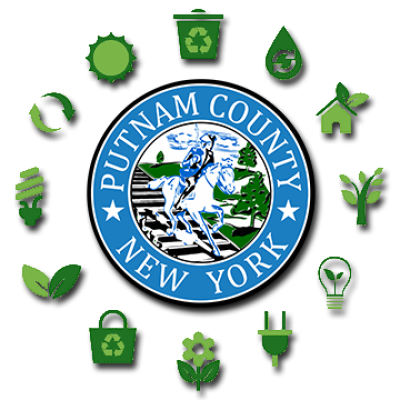
-
Barbara Barosa, AICP
Commissioner -
Ilona Campo
Climate Smart Coordinator
